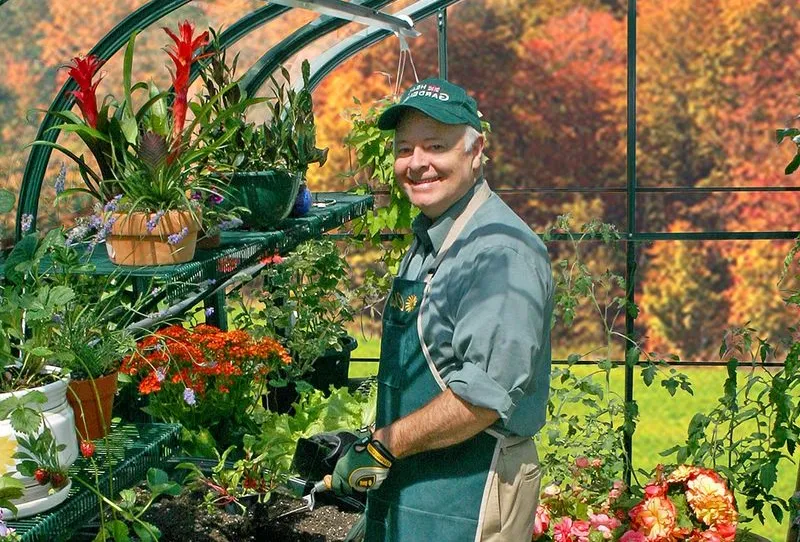10 Ways to Keep Your Greenhouse Cool in Summer
Keeping your greenhouse cool during the hot summer months is critical for creating the perfect environment for your plants. Most plants thrive in temperatures between 50°F and 75°F, but when the mercury rises above 85°F, it can be harmful.
High ambient temperatures, full sun exposure, and increased energy consumption can make greenhouse cooling a challenge in the summer. That’s why it’s so important to have effective cooling strategies in place to prevent heat stress and keep your plants healthy and productive. Consider the following methods to help you keep your greenhouse cool this summer.
Ventilation
Maintaining a cool environment in your greenhouse is essential for the health and vitality of your plants. Effective ventilation plays a crucial role in efficient cooling. Here are some practical strategies to help you achieve this:
-
Manual ventilation. Open all vents, windows, and doors for adequate manual ventilation to maximize airflow. Placing vents at both the roof and lower levels creates a natural chimney effect, letting hot air escape while drawing in cooler air from below. However, timing is crucial: open vents early in the morning to release overnight heat buildup and close them in the evening to retain warmth.
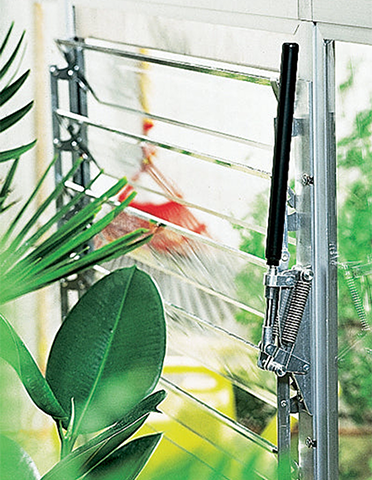
-
Automated ventilation. Consider installing automatic vent openers with temperature-sensitive wax pistons for automated temperature control. These pistons expand and contract to open and close vents as needed, ensuring consistent airflow without manual intervention.
-
Enhancing natural ventilation. Try installing louvered intake vents near the base of your greenhouse. This way, cooler air is drawn in from the ground while hot air escapes through higher vents. Pair this setup with horizontal airflow fans for even better air circulation.
Shade Cloths
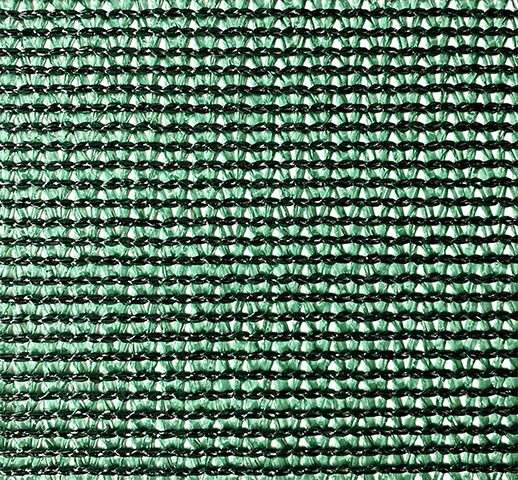
Direct sunlight can cause a lot of heat buildup in your greenhouse, making shade cloths or netting essential for cooling. These coverings help reduce the sunlight entering your greenhouse, preventing it from getting too hot.
Choose the right shading percentage based on your plants’ light needs—use 30% shade cloths for sun-loving veggies like cucumbers and eggplants that need lots of sunlight and up to 90% for delicate plants like ferns and orchids that prefer filtered light.
Use a mounting system that lets you roll up or remove the shade cloth when it’s not needed, like during cooler seasons. Make sure the fabric is taut and not sagging. Also, use interior shade curtains that can be opened or closed as needed for extra temperature control.
Misting Systems

Misting systems are a great way to cool your greenhouse by using the power of evaporation. When water droplets are released into the air through specialized nozzles, they absorb heat from the surroundings, lowering temperatures and boosting humidity—perfect conditions for many plants. Installing a high-pressure misting system can create a refreshing, humid microclimate in your greenhouse.
Position misting nozzles throughout the greenhouse to ensure the cooling mist is evenly distributed for the best results. Automated misters with timers and humidistats can help maintain consistent humidity levels without oversaturating the air. Water filters can prevent mineral buildup in the misting lines.
Evaporative Coolers
Evaporative coolers are a fantastic and efficient way to cool your greenhouse. They work by drawing in hot air and passing it through water-saturated pads. As the air moves through these pads, evaporation cools it down before it enters the greenhouse.
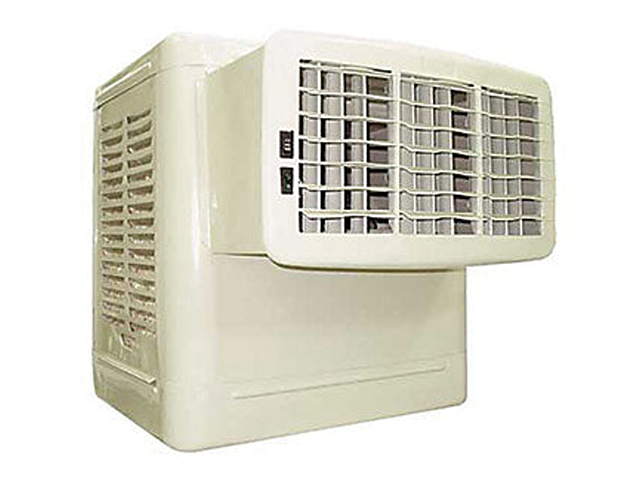
Our energy-efficient evaporative coolers can lower temperatures by up to 30°F, making them especially effective in dry, low-humidity areas where this type of cooling works best.
Proper sizing and placement are crucial for optimal performance. Plan for about 1 square foot of cooling pad area for every 20 square feet of greenhouse floor space. Position the cooler near an intake vent or louver to draw in the hottest outside air, and use a thermostat control to ensure the cooler runs only when needed, helping to save energy.
Fans
Proper air circulation is critical to preventing hot spots and ensuring even temperature distribution within your greenhouse. Strategically place oscillating fans, exhaust fans, or horizontal airflow fans to move hot air out and draw cooler air in continuously.
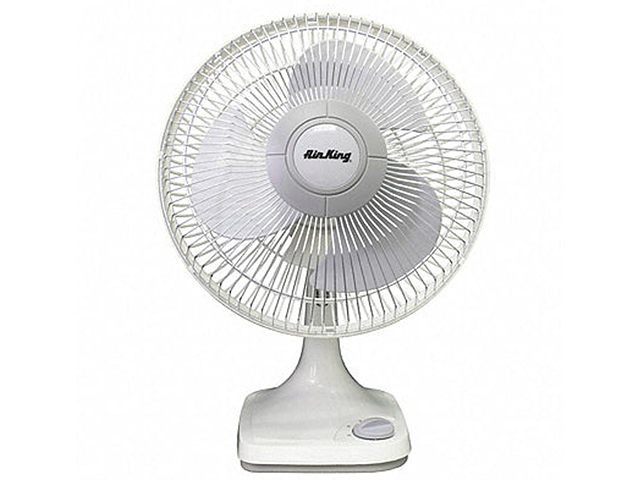
-
Oscillating fans. Oscillating fans move air in multiple directions, providing even air circulation throughout the greenhouse. Position these fans at the top of the greenhouse for the best results because hot air rises. Also, consider installing intake shutters near the bottom to promote airflow from cooler areas outside.
-
Exhaust fans. Choosing the right fan size is essential based on the cubic foot per minute (CFM) rating and your greenhouse’s volume. Generally, you’ll need enough fan capacity to provide one full air exchange per minute up to an 8-foot ceiling height.
Mount exhaust fans at the top of the greenhouse to expel rising hot air. Pair them with intake vents at the lower part of the structure to draw in cooler air from outside. This setup creates a continuous flow of air, reducing the greenhouse temperature.
Reflective Mulch
Using reflective mulch, like aluminum foil sheets or specialized metalized plastic sheeting, on the ground is another great way to reduce soil temperature and prevent heat buildup in your greenhouse.
When sunlight hits the reflective surface, it bounces back instead of absorbed, keeping the air cooler overall. This simple method also helps conserve soil moisture by reflecting radiant heat, reducing the need for frequent watering.
Apply reflective mulches strategically in walkways and bare soil areas not used for growing beds. Secure the edges with landscape staples or bricks to keep them in place. Reapply or replace the mulch when the reflective surface becomes dirty or worn over time.
Whitewashing
Temporarily painting the greenhouse roof or exterior with a whitewash solution can deflect sunlight and keep the interior cooler during the hottest summer months.
This cost-effective solution is easy to apply using common whiting lime paint or a pre-mixed greenhouse whitewash and can reduce heat buildup from solar radiation. Remember to reapply the whitewash every few weeks for maximum effectiveness throughout the summer.
For a basic whitewash solution, mix hydrated lime with water until you reach a paint-like consistency, adding salt to help the mixture adhere to greenhouse surfaces. Apply with a brush, roller, or sprayer, covering all exterior surfaces exposed to direct sun. Rinse off when temperatures cool in the fall.
Thermal Mass
Adding thermal mass elements like water barrels, stones, or concrete blocks to your greenhouse can help stabilize temperatures and prevent extreme fluctuations.
During the day, these dense materials absorb excess heat, and at night, when temperatures drop, they slowly release the stored heat, maintaining a more consistent temperature range. This passive cooling and heating technique is especially beneficial in areas with significant day-night temperature swings.
Place thermal mass materials like water barrels near plants and walkways where they can absorb radiant heat during the day. Darker colors will absorb heat more effectively than lighter ones.
Ensure containers are well-sealed to prevent evaporation and algae growth. The more thermal mass you incorporate, the better the buffering effect against temperature extremes.
Insulating Barriers
Insulating barriers like bubble wrap or thermal screens can reflect heat away from the greenhouse walls and roof, maintaining a cooler internal environment. These barriers prevent radiant heat entry and provide insulative air space between layers. They are especially beneficial during the hottest parts of the day or in regions with intense sunlight exposure.
Install insulating barriers on the interior or exterior of your greenhouse before temperatures peak to maximize cooling benefits. Use mounting systems that allow the barriers to be rolled up or removed when no longer needed.
Pay close attention to securing edges and seams to prevent heat from seeping in. Consider combining with other cooling methods, such as fans or evaporative cooling.
Strategic Plant Placement
Arranging plants thoughtfully within your greenhouse layout can maximize shading and reduce direct sun exposure, helping to keep temperatures down naturally.
-
Use taller plants for natural shade. When oriented properly, taller plants like tomatoes or fruit trees can provide shade for shorter vegetation like herbs or leafy greens. Plants with large leaves, like grapevines and fig trees, can transpire moisture from their foliage, creating a cooling effect through nearby evaporation.
-
Grouping plants by light requirements. Group plants with similar light and shade requirements together in your greenhouse rows and beds. This prevents shading issues where some receive too little light while allowing the strategic use of shadow patterns to reduce overall heat gain. Use hanging baskets to create plant canopy layers replicating natural tree shade patterns.
-
Deciduous trees for seasonal shade. Planting certain species of deciduous trees, like maples or fruit trees, near the greenhouse exterior can also offer natural shading in the summer while allowing sunlight to penetrate during the winter months when you need it most. Just leave enough distance from the greenhouse to avoid damaging roots.
Beat the Heat: Cool Your Greenhouse with Charley’s Greenhouse & Garden
Effective greenhouse cooling helps to maintain optimal growing conditions during summer. Explore our extensive range of cooling solutions at Charley’s Greenhouse and Garden to keep your greenhouse at the perfect temperature.
From ventilation systems to shade cloths and misting setups, we have everything you need to beat the heat. Contact us today to find the best products for your greenhouse cooling needs.


